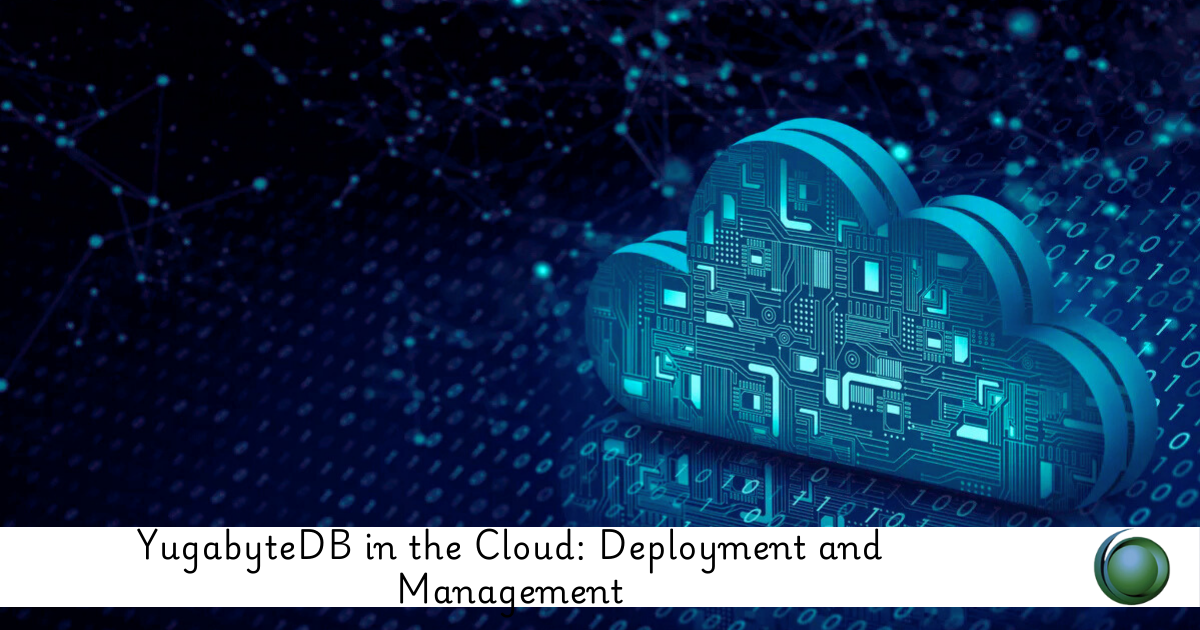Description
Introduction of YugabyteDB in Cloud for Deployment
YugabyteDB is a high-performance, distributed SQL database designed to handle modern cloud-native applications at scale. When deployed in the cloud, YugabyteDB offers unparalleled scalability, high availability, and fault tolerance across multiple regions. This guide provides an overview of how to deploy and manage YugabyteDB in the cloud, covering key considerations such as architecture, best practices, and tools for cloud management.
Prerequisites of YugabyteDB in Cloud for Deployment
- Basic knowledge of distributed databases and YugabyteDB architecture.
- Familiarity with cloud platforms (AWS, GCP, Azure) and their services.
- Understanding of containerization (Docker, Kubernetes) and orchestration tools.
- Access to a cloud environment for testing deployments (AWS, GCP, Azure).
Table of Contents
- Overview of YugabyteDB in the Cloud
1.1 Benefits of Cloud Deployment for YugabyteDB
1.2 Key Features of YugabyteDB in the Cloud (Ref: YugabyteDB Backup, Recovery, and Disaster Management)
1.3 Cloud-Native Architecture of YugabyteDB - Cloud Deployment Models for YugabyteDB
2.1 Single-Region vs Multi-Region Deployments
2.2 Cloud Provider-Specific Deployments (AWS, GCP, Azure)
2.3 Deploying YugabyteDB on Kubernetes
2.4 Self-Managed vs Yugabyte Cloud (Managed Service) - Provisioning YugabyteDB in the Cloud
3.1 Setting Up Infrastructure: Virtual Machines or Kubernetes Clusters
3.2 Configuring Network and Security Settings for Cloud Deployments
3.3 Deploying YugabyteDB Using Helm Charts in Kubernetes
3.4 Scaling YugabyteDB Clusters in the Cloud - High Availability and Fault Tolerance in the Cloud
4.1 Implementing Multi-Region Deployments for Global Availability
4.2 Configuring Automatic Failover and Replication in YugabyteDB
4.3 Managing Data Consistency and Isolation Across Regions
4.4 Backup and Disaster Recovery Strategies for Cloud Deployments - Scaling YugabyteDB in the Cloud
5.1 Horizontal Scaling and Sharding in YugabyteDB
5.2 Adjusting Node Resources Dynamically Based on Load
5.3 Using Auto-Scaling Groups for Seamless Scaling
5.4 Managing Load Balancing and Distributed Transactions - Security in Cloud Deployments
6.1 Encrypting Data at Rest and in Transit
6.2 Implementing Network Security: VPCs, Firewalls, and VPNs
6.3 Using IAM (Identity and Access Management) for Access Control
6.4 Multi-Region Data Compliance and Security Considerations - Performance Tuning and Optimization in the Cloud
7.1 Monitoring and Profiling Performance in the Cloud
7.2 Optimizing I/O Performance for Cloud Storage
7.3 Adjusting YugabyteDB Configuration for Cloud Performance
7.4 Leveraging Cloud-Specific Features for Better Performance - Backup and Disaster Recovery in Cloud Environments
8.1 Automated Backups in the Cloud
8.2 Cross-Region Backup and Restore
8.3 Implementing Point-in-Time Recovery (PITR)
8.4 Ensuring Data Durability in the Cloud - Cloud Cost Management for YugabyteDB
9.1 Estimating and Managing Cloud Costs for YugabyteDB
9.2 Cost Optimization Strategies for Cloud Database Deployments
9.3 Choosing the Right Cloud Instance Types and Storage Options
9.4 Monitoring Usage and Cost with Cloud Billing Tools - Cloud Provider-Specific YugabyteDB Integrations
10.1 Integrating YugabyteDB with AWS Services (EC2, S3, EBS, etc.)
10.2 Leveraging Google Cloud Services with YugabyteDB (GCE, Cloud Storage, BigQuery)
10.3 Azure Integration: Using YugabyteDB with Azure Resources
10.4 Using Cloud Native Tools for Backup, Monitoring, and Logging - Case Studies: YugabyteDB in Cloud Environments
11.1 Deploying YugabyteDB for Multi-Region Applications
11.2 YugabyteDB in Financial Services: Ensuring High Availability and Scalability
11.3 Managing E-Commerce Databases in the Cloud with YugabyteDB
11.4 Case Study: Scaling a Social Media Application with YugabyteDB in the Cloud - Conclusion
12.1 Recap of Key Cloud Deployment and Management Best Practices
12.2 Future Trends in Cloud Databases and YugabyteDB
12.3 Continuous Improvement in Cloud Database Management
Conclusion
Deploying YugabyteDB in the cloud allows organizations to leverage the power of distributed SQL with the scalability, availability, and flexibility of cloud infrastructure. By following best practices for provisioning, scaling, security, and performance tuning, you can optimize your cloud deployments and ensure that YugabyteDB serves as a reliable and high-performing database solution. Whether using self-managed clusters or the Yugabyte Cloud service, organizations can effectively harness the power of distributed SQL for modern cloud-native applications.







Reviews
There are no reviews yet.